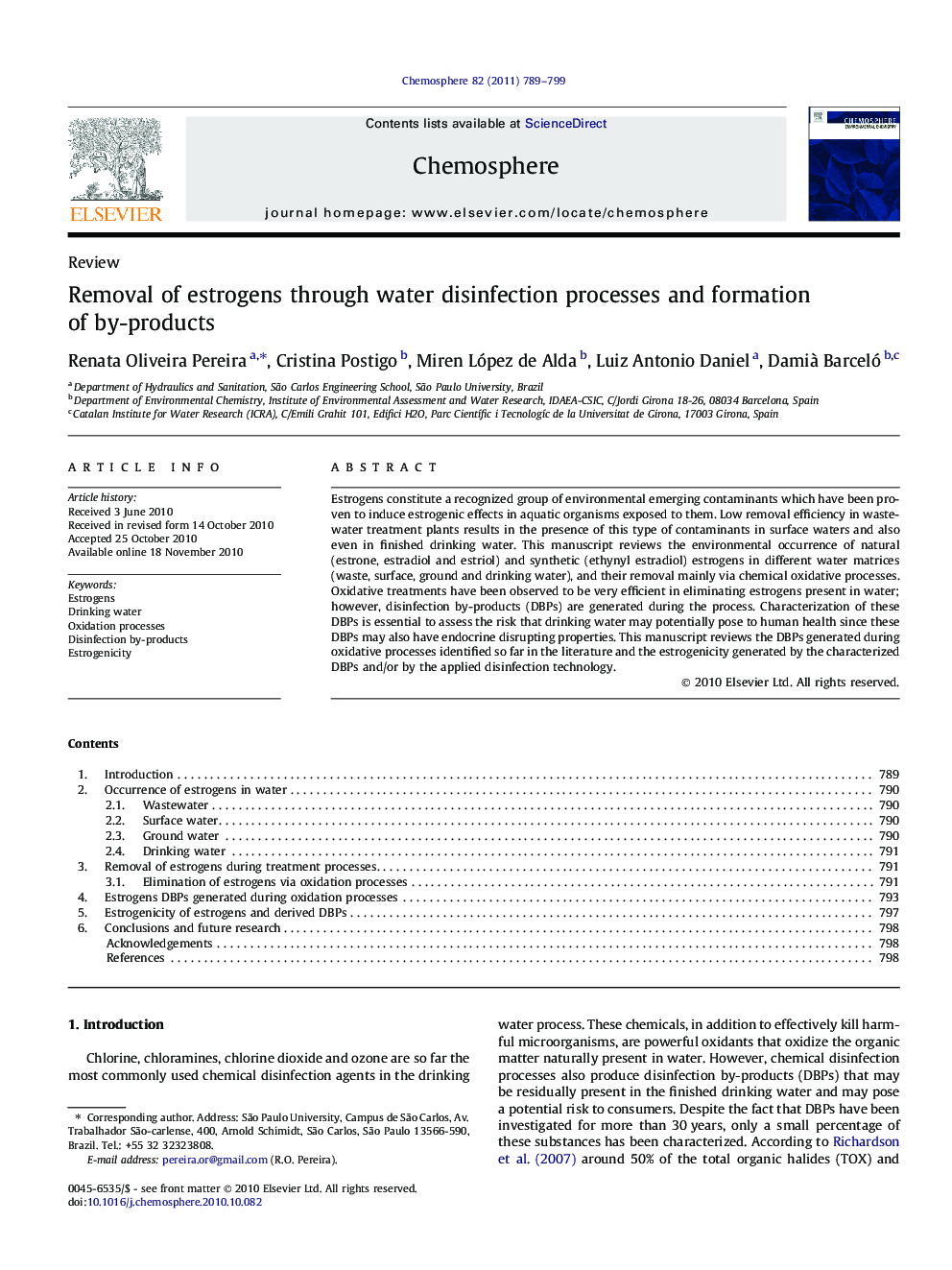| Article ID | Journal | Published Year | Pages | File Type |
|---|---|---|---|---|
| 4411468 | Chemosphere | 2011 | 11 Pages |
Estrogens constitute a recognized group of environmental emerging contaminants which have been proven to induce estrogenic effects in aquatic organisms exposed to them. Low removal efficiency in wastewater treatment plants results in the presence of this type of contaminants in surface waters and also even in finished drinking water. This manuscript reviews the environmental occurrence of natural (estrone, estradiol and estriol) and synthetic (ethynyl estradiol) estrogens in different water matrices (waste, surface, ground and drinking water), and their removal mainly via chemical oxidative processes. Oxidative treatments have been observed to be very efficient in eliminating estrogens present in water; however, disinfection by-products (DBPs) are generated during the process. Characterization of these DBPs is essential to assess the risk that drinking water may potentially pose to human health since these DBPs may also have endocrine disrupting properties. This manuscript reviews the DBPs generated during oxidative processes identified so far in the literature and the estrogenicity generated by the characterized DBPs and/or by the applied disinfection technology.
